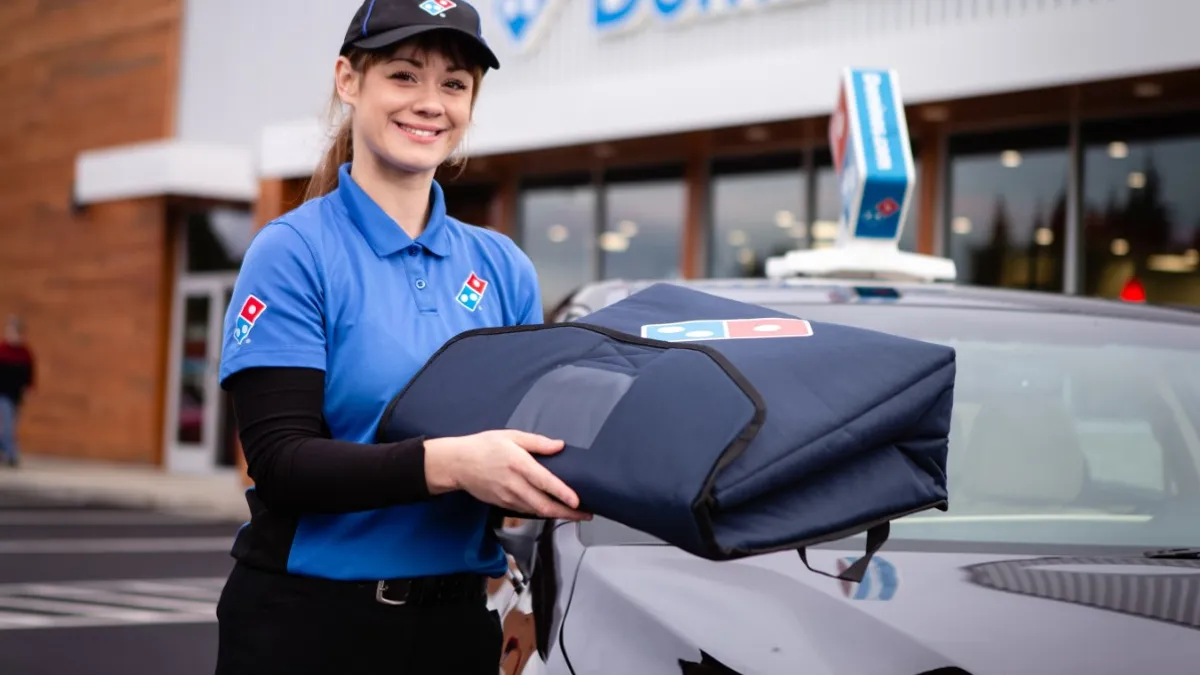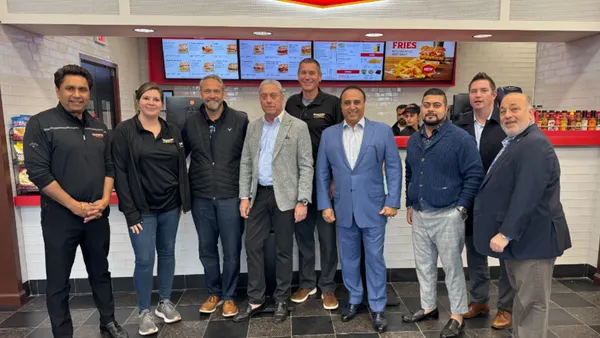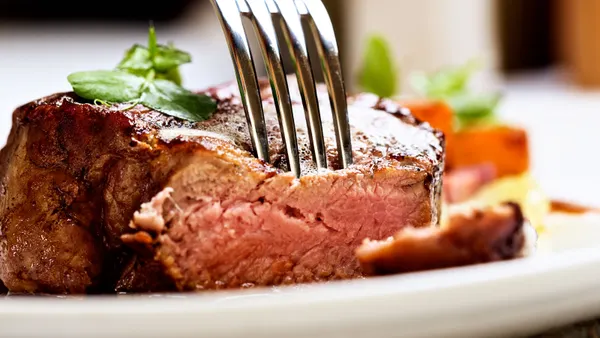Dive Brief:
- Domino's same-store sales grew 17.5% during Q3 2020, positively impacted by customer ordering behavior during the pandemic, according to an earnings release. This marks the 38th consecutive quarter of growth in the U.S.
- Despite continued growth, operating margins decreased slightly to 37.4% compared to 38.5% in the year ago quarter due primarily to investments made related to the COVID-19 pandemic, Stu Levy, Domino’s chief financial officer, said during a call with investors on Thursday. Company-owned store margins have also been negatively impacted by higher labor and supplies costs related to the pandemic.
- While the pandemic has positively impacted pizza chains, including Domino’s, Papa John’s and Pizza Hut, it has still impacted operations with the addition of more costs. Levy said Domino’s spent $11 million on safety and cleaning equipment, enhanced sick pay and other compensation for team members and support for its franchisees and communities.
Dive Insight:
In addition to pandemic-related expenses that didn't exist a year ago, Domino's is also facing higher food costs and a slight decrease in supply chain operating margins, especially related to higher cheese costs. The food basket was up 3.8% during the quarter compared to being down 1.2% in Q2 2020, Levy said.
At the same time, the company has been opening supply chain centers with one going on line in Q2 and another expected to open in Texas in Q4, Levy said. The company also increased capacity for its thin crust production in Q3. These investments result in increased capacity, which can lead to a better value for franchisees, he said.
"Generally speaking, when we drive operating efficiencies or other improvements in the business, we're trying to share that with our franchisees so that they aren't negatively impacted," Levy said.
With the exception of minimum wage increases across the country, some of the operating costs are expected to be pared back post-pandemic, Ritch Allison, Domino’s CEO said. The company has been offering enhanced compensation and sick pay, which will be especially important as the pizza chain aims to hire thousands of employees to keep up with ongoing demand.
Despite these additional costs, Domino’s revenue was up 17.9% to $146.9 million compared to the year-ago quarter. The company has been making significant technological investments, with carside delivery, which has been embraced by its franchisees, available at 95% of its U.S. stores, GPS technology in place at 90% of its domestic locations and enhanced make line tools in about 80% of U.S. stores allowing employees to get pizzas into the oven faster and improve service times, Allison said.
Digital and loyalty adoption is also helping drive customer frequency, Allison said. It has also seen ongoing customer interest for its $5.99 and $7.99 platform as value is more top of mind to consumers during the economic downturn. The company added two specialty pizzas during the quarter, offering them for $11.99, which its research showed was a great value, Allison said. The company also added wings to its $7.99 carryout promotion, he said.
"When I think about what's happening with the consumer right now, and looking forward with this recession that we are sitting in today, and the fact that there has been no incremental stimulus brought to the consumer, I look forward and believe that our value platforms and sticking to those platforms will only be more important, as we look out into the months and quarters ahead," Allison said.











